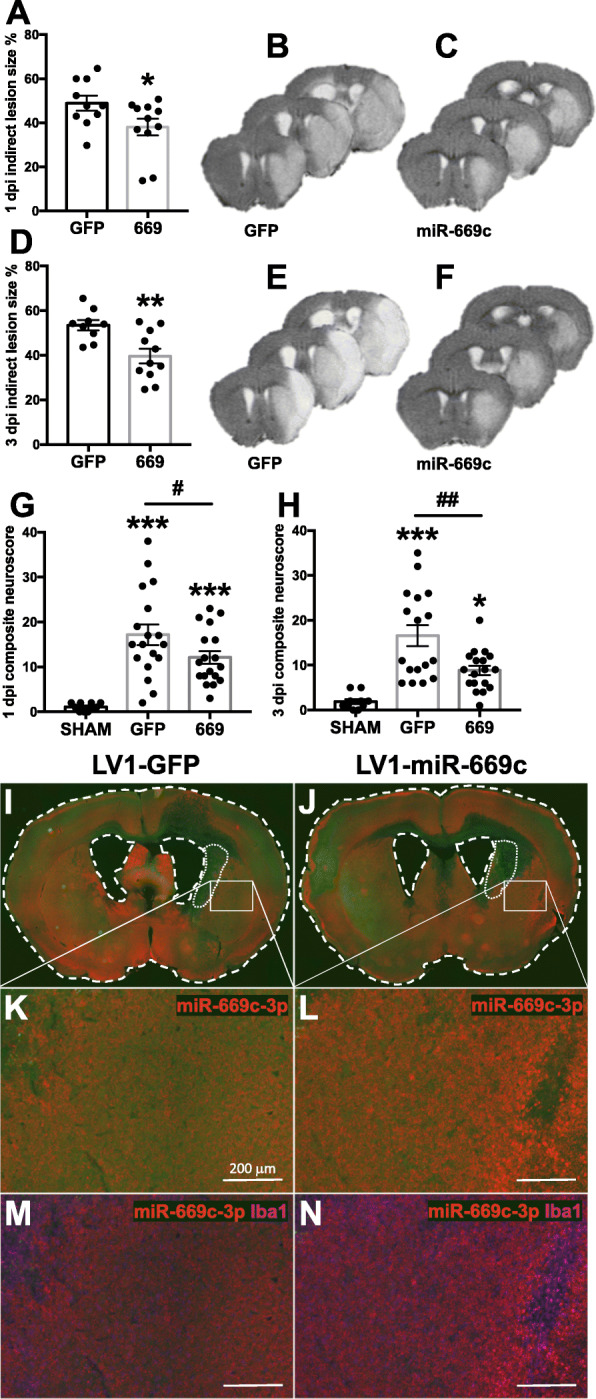Fig. 4.

Lentiviral vector-mediated overexpression of miR-669c decreases ischemic brain damage and ameliorates neurological deficits. Quantification (a) and representative T2-weighted MRI brain images of tMCAo mice injected either with control LV1-GFP (b) or LV1-miR-669c (c) at 1 dpi. Respectively, panels d-f depict the quantification (d) and representative MRI images of control LV1-GFP (e) or LV1-miR-669c (f) animals 3 dpi. Unpaired two-tailed t tests: *p < 0.05, **p < 0.01 compared to LV1-GFP tMCAo mice. N = 9-11 in each tMCAo group. TMCAo animals intrastriatally injected with LV1-miR-669c (669) showed improved locomotor functions at 1 (g) and 3 dpi (h). Behavior was evaluated by composite neuroscore testing. One-way ANOVA followed by Bonferroni’s post hoc tests: *p < 0.05, ***p < 0.001 compared to sham-operated animals and #p < 0.05, ##p < 0.01 compared to LV1-GFP tMCAo mice. N = 11 in sham-operated groups and N = 17-18 for tMCAo groups. Panels i-n illustrate the extent of miR-669c-3p expression (red) and Iba1 immunoreactivity (magenta) in representative LV1-GFP (i, k, m) or LV1-miR-669c (j, l,n) injected sham animals at 3 dpi. The LV injection sites are marked with white dotted lines
